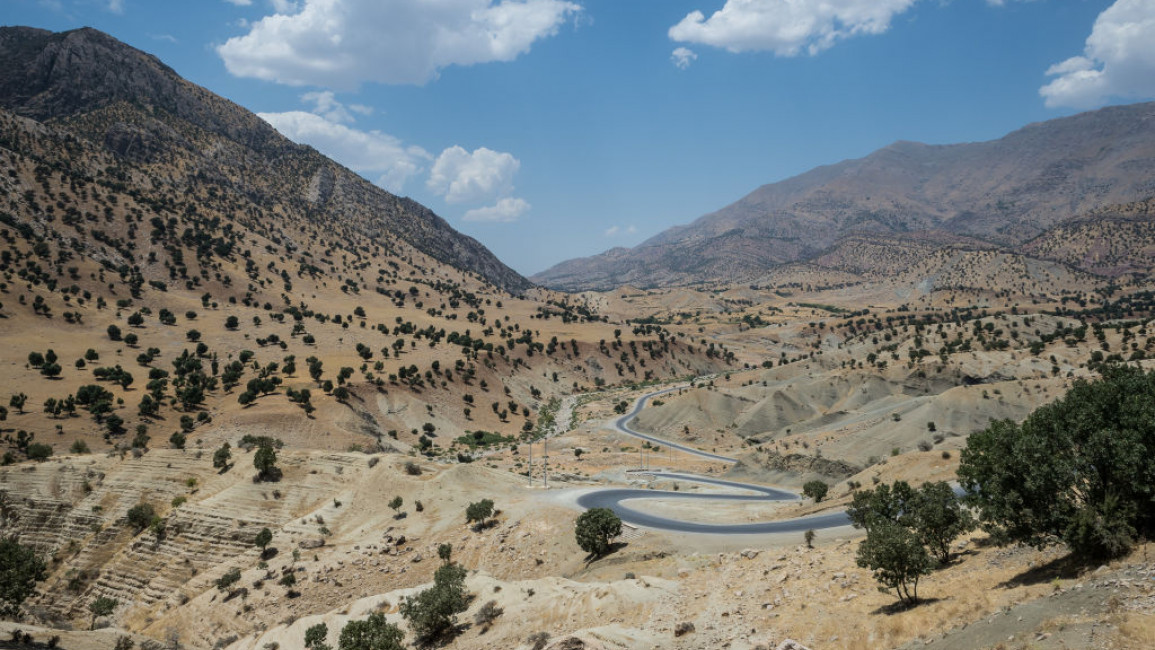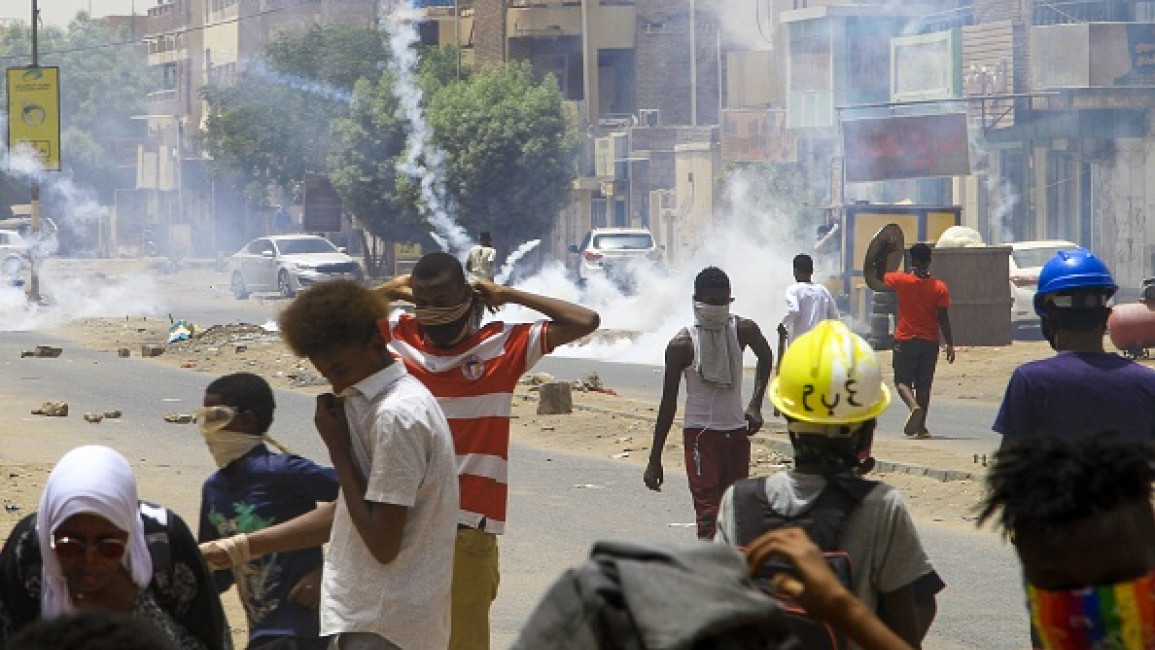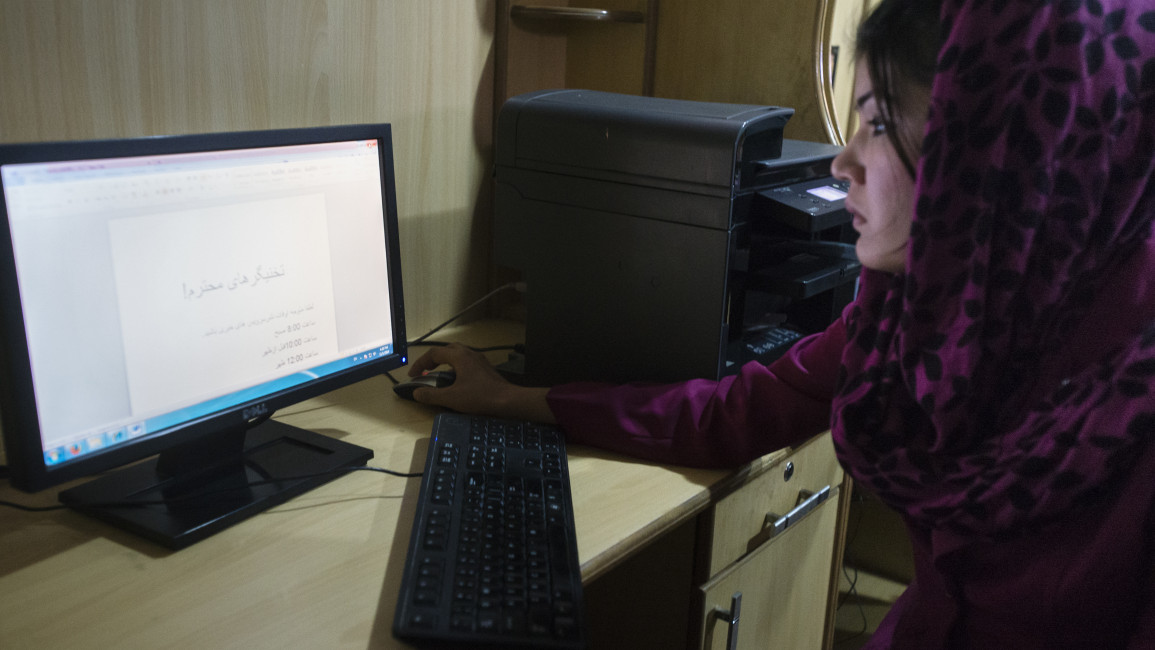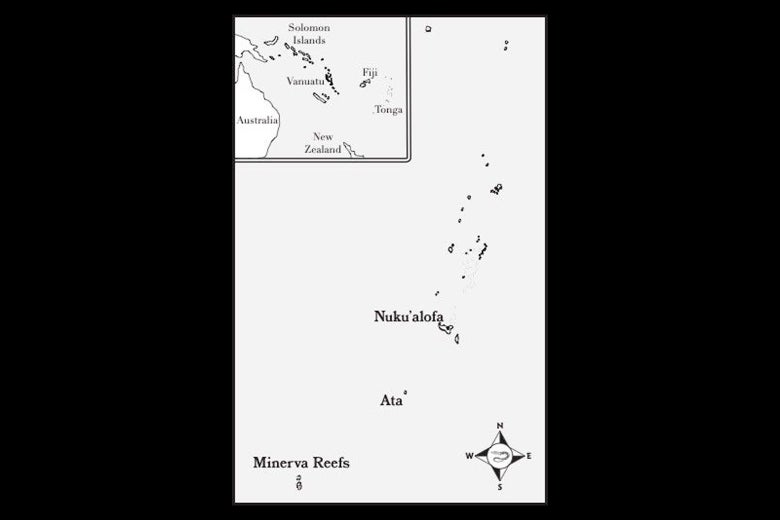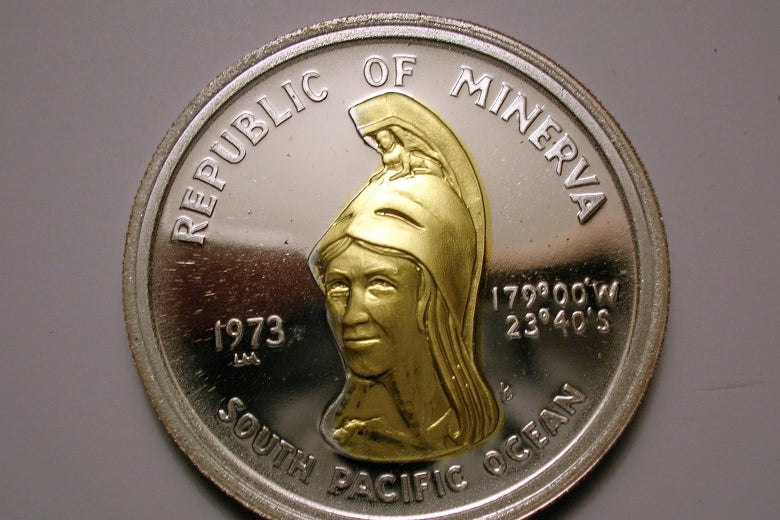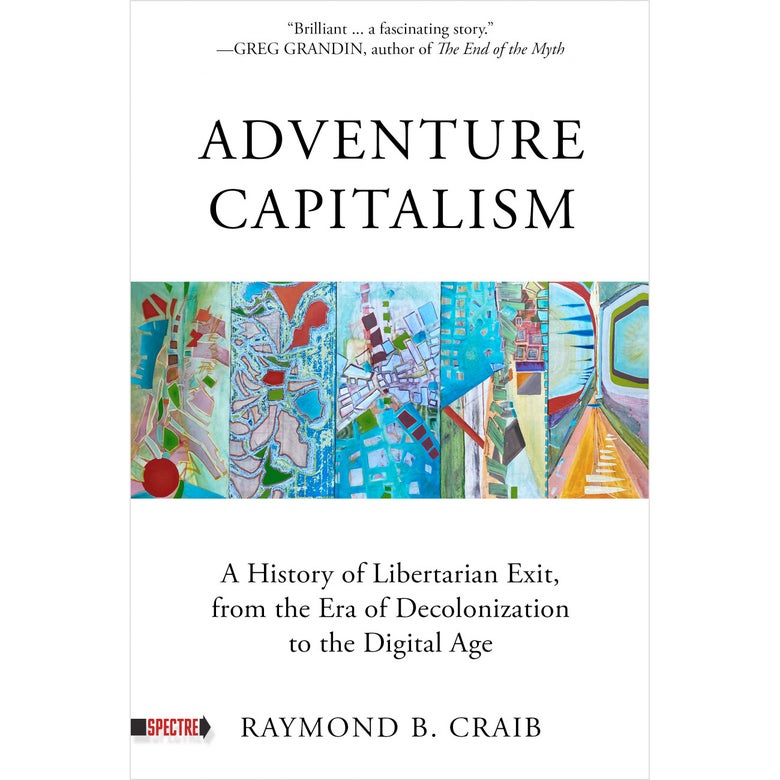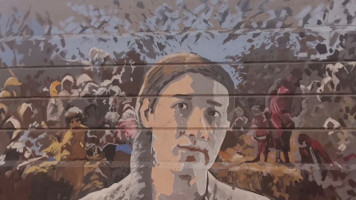
Meet Wijdan Al-Majid, the Iraqi muralist at the forefront of Baghdad's cultural renaissance
Zainab Mehdi
13 May, 2022
Like a phoenix rising from the ashes, Baghdad's creative milieu is on its way to being restored. This is in part due to a dedicated team of artists and architects who have helped beautify the city's architecture, of which Wijdan al-Majid is a member.
From Iraqi Architect Zaha Hadid to Iraqi Poet Muhammad Mahdi Al-Jawahiri, Wijdan Al-Majid is the Iraqi artist behind the recent explosion of mural paintings across Baghdad.
Wijdan, who also teaches at Baghdad’s Fine Arts College, specialises in watercolours.
Having already completed 16 murals across Baghdad city, Wijdan’s recent and completed projects are dedicated to prominent Iraqi artists including, Jawad Saleem (1919-1961), one of the greatest 20th-century sculptors and painters whose most notable work includes the Nasb al-Hurriyah (Monument of Freedom), and Hafidh Al-Droubi (1914-1991), known for his Cubist paintings and his approach to professionalising Iraqi art education in the early to the mid-20th century.
"The Baghdad Renaissance project continues to provide vital infrastructure projects, develop streets and neighbourhoods of the capital, as well as the beauty of the industry, through creative artworks jointly implemented by professors, academics and great creators from the artistic community"
On the two buildings in Al Sadria Market, Baghdad’s main neighbourhood, the representation of watermelons in each of the paintings resonates with the market’s long history of selling vegetables and fruits, including mouth-watering watermelons.
At present, Wijdan is finalising a mural painting of Mudhafar Al Nawab, an Iraqi artist and poet. Joining the Iraqi Communist Party at an early age, Al Nawab was imprisoned and tortured under the Baath regime during Saddam Hussein’s reign.
Al Nawab eventually left Iraq in 1970 and lived in exile until 2011, when he came back to Baghdad for a brief visit.
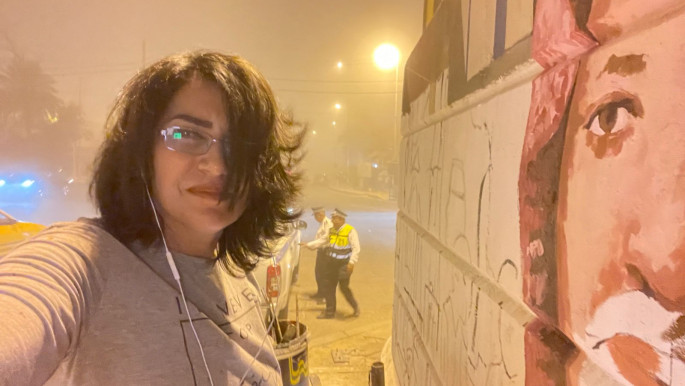
RELATED
Coexistent Ruins: Exploring Iraq’s Mesopotamian past via art
Culture. Karen Dabrowska
As stated in a number of reports, corruption and Iraq’s volatile security situation have been the primary obstacles preventing Iraq’s redevelopment after the collapse of Saddam Hussein’s regime and the consequential implementation of the new governance system referred to as the Muhasasa Ta’ifia sectarian apportionment system.
Since the introduction of the Baghdad Renaissance Project, hope has been restored among the Iraqi community.
Thanks to the project, it has been possible to give the Iraqi community the space to use their creativity to help guide Iraq towards the path of recovery, and by default, allow the city to experience a cultural renaissance representative of a city which was once a beacon for artists.
Zainab Mehdi is a Researcher and Freelance Journalist specialising in governance, development, and conflict in the Middle East and North Africa region.
Follow her on Twitter: @zaiamehdi
Like a phoenix rising from the ashes, Baghdad's creative milieu is on its way to being restored. This is in part due to a dedicated team of artists and architects who have helped beautify the city's architecture, of which Wijdan al-Majid is a member.
From Iraqi Architect Zaha Hadid to Iraqi Poet Muhammad Mahdi Al-Jawahiri, Wijdan Al-Majid is the Iraqi artist behind the recent explosion of mural paintings across Baghdad.
Wijdan, who also teaches at Baghdad’s Fine Arts College, specialises in watercolours.
Having already completed 16 murals across Baghdad city, Wijdan’s recent and completed projects are dedicated to prominent Iraqi artists including, Jawad Saleem (1919-1961), one of the greatest 20th-century sculptors and painters whose most notable work includes the Nasb al-Hurriyah (Monument of Freedom), and Hafidh Al-Droubi (1914-1991), known for his Cubist paintings and his approach to professionalising Iraqi art education in the early to the mid-20th century.
"The Baghdad Renaissance project continues to provide vital infrastructure projects, develop streets and neighbourhoods of the capital, as well as the beauty of the industry, through creative artworks jointly implemented by professors, academics and great creators from the artistic community"
On the two buildings in Al Sadria Market, Baghdad’s main neighbourhood, the representation of watermelons in each of the paintings resonates with the market’s long history of selling vegetables and fruits, including mouth-watering watermelons.
At present, Wijdan is finalising a mural painting of Mudhafar Al Nawab, an Iraqi artist and poet. Joining the Iraqi Communist Party at an early age, Al Nawab was imprisoned and tortured under the Baath regime during Saddam Hussein’s reign.
Al Nawab eventually left Iraq in 1970 and lived in exile until 2011, when he came back to Baghdad for a brief visit.

Wijdan al-Majid painting during Iraq's recent sandstorm [credit: Wijdan al-Majid]
Supporting Wijdan’s mural projects is Alaa Maan, the Mayor of Baghdad who took office approximately 18 months ago.
Determined to work with the Iraqi people and reassure the population that Iraq’s reconstruction efforts are underway, Alaa established the Baghdad Renaissance Project.
In a January 2022 press statement, Alaa said: “The Baghdad Renaissance project continues to provide vital infrastructure projects, develop streets and neighbourhoods of the capital, as well as the beauty of the industry, through creative artworks jointly implemented by professors, academics and great creators from the artistic community.”
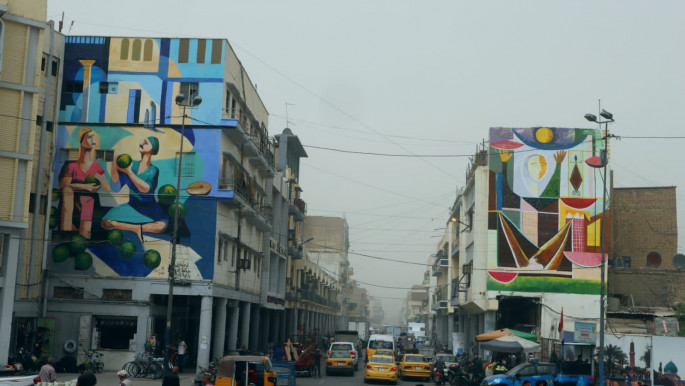
Supporting Wijdan’s mural projects is Alaa Maan, the Mayor of Baghdad who took office approximately 18 months ago.
Determined to work with the Iraqi people and reassure the population that Iraq’s reconstruction efforts are underway, Alaa established the Baghdad Renaissance Project.
In a January 2022 press statement, Alaa said: “The Baghdad Renaissance project continues to provide vital infrastructure projects, develop streets and neighbourhoods of the capital, as well as the beauty of the industry, through creative artworks jointly implemented by professors, academics and great creators from the artistic community.”

Jawad Saleem and Hafidh al-Droubi's Watermelon paintings [credit Wijdan al-Majid]
Paying homage to prominent figures who played a key role in Iraqi society and gave back to the public, the mural projects have also been put in place to educate the population about Iraq’s rich art and history.
That said, a few of the mural projects also include paintings of international figures such as Mother Teresa, one of the greatest humanitarians of the 20th century who dedicated much of her life to serving the poor, and Max Weber, the founding fathers of sociology.
Worth noting is the sustainable aspects of the mural paintings. In an exclusive interview, the artist explained that some of the mural installations on the streets of Baghdad were original ruins from Iraq’s wars.
Because some of the ruins were neglected by the Iraqi government, Alaa proposed re-using the ruins and transforming them into street murals. According to Wijdan, the ruins were found in some of Iraq’s railway stations.
In the mural of Nadia Murad, the background of the painting illustrates the migration of the Iraqi community, as well as the suffering those displaced as a result of IS’s occupation in 2014 witnessed and continue to endure.Alongside the afore-mentioned artistic figures are murals also dedicated to peacekeepers. One notable example is the mural dedicated to Nadia Murad, an Iraqi Yazidi human rights activist once kidnapped by the Islamic State (IS) in Iraq.
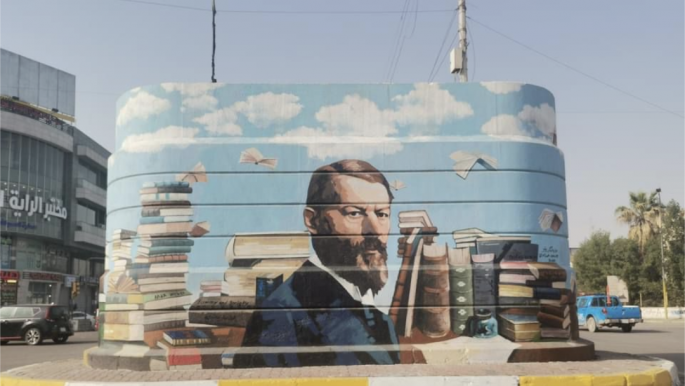
Paying homage to prominent figures who played a key role in Iraqi society and gave back to the public, the mural projects have also been put in place to educate the population about Iraq’s rich art and history.
That said, a few of the mural projects also include paintings of international figures such as Mother Teresa, one of the greatest humanitarians of the 20th century who dedicated much of her life to serving the poor, and Max Weber, the founding fathers of sociology.
Worth noting is the sustainable aspects of the mural paintings. In an exclusive interview, the artist explained that some of the mural installations on the streets of Baghdad were original ruins from Iraq’s wars.
Because some of the ruins were neglected by the Iraqi government, Alaa proposed re-using the ruins and transforming them into street murals. According to Wijdan, the ruins were found in some of Iraq’s railway stations.
In the mural of Nadia Murad, the background of the painting illustrates the migration of the Iraqi community, as well as the suffering those displaced as a result of IS’s occupation in 2014 witnessed and continue to endure.Alongside the afore-mentioned artistic figures are murals also dedicated to peacekeepers. One notable example is the mural dedicated to Nadia Murad, an Iraqi Yazidi human rights activist once kidnapped by the Islamic State (IS) in Iraq.

Mural painting of German sociologist Max Weber [credit: Wijdan al-Majid]
“There is a certain level of ignorance when it comes to art in Iraq," Wijdan told The New Arab. "After people started to take notice of my work, and especially the mural paintings I have been working on, feelings of shock combined with appreciation emerged.
"The paintings have created a loud noise in Baghdad, and also increased communication among individuals," she added commenting on the Iraqi public’s reaction to her work. "For example, after people started to recognise my work, I received messages and requests to work on more mural paintings. In addition to receiving such messages, I have also inspired others to paint.”
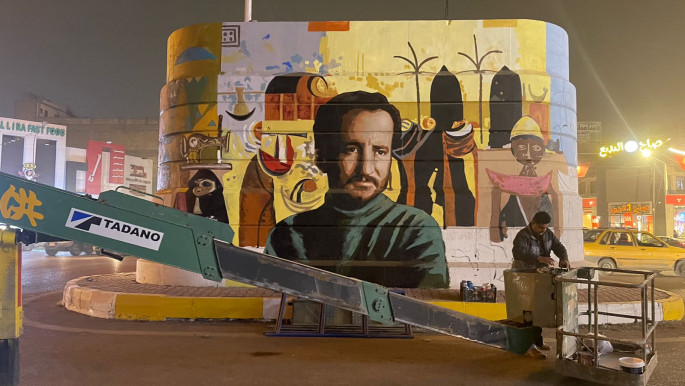
“There is a certain level of ignorance when it comes to art in Iraq," Wijdan told The New Arab. "After people started to take notice of my work, and especially the mural paintings I have been working on, feelings of shock combined with appreciation emerged.
"The paintings have created a loud noise in Baghdad, and also increased communication among individuals," she added commenting on the Iraqi public’s reaction to her work. "For example, after people started to recognise my work, I received messages and requests to work on more mural paintings. In addition to receiving such messages, I have also inspired others to paint.”

Mural of Iraqi painter and sculptor Jawad Saleem [credit: Wijdan al-Majid]
“One day, I know I will have to stop with my mural paintings. However, this won’t be the end of mural paintings in Iraq. Other artists will take on my job and continue to transform Baghdad like other Western countries where there is greater awareness and appreciation for mural paintings.”
In a nutshell, the mural projects part of the Baghdad Renaissance Project can be interpreted as a good sign of governance and commitment to rebuilding trust with the Iraqi people, who have repeatedly been let down by a number of failed projects during the post-2003 reconstruction years.
“One day, I know I will have to stop with my mural paintings. However, this won’t be the end of mural paintings in Iraq. Other artists will take on my job and continue to transform Baghdad like other Western countries where there is greater awareness and appreciation for mural paintings.”
In a nutshell, the mural projects part of the Baghdad Renaissance Project can be interpreted as a good sign of governance and commitment to rebuilding trust with the Iraqi people, who have repeatedly been let down by a number of failed projects during the post-2003 reconstruction years.
RELATED
Coexistent Ruins: Exploring Iraq’s Mesopotamian past via art
Culture. Karen Dabrowska
As stated in a number of reports, corruption and Iraq’s volatile security situation have been the primary obstacles preventing Iraq’s redevelopment after the collapse of Saddam Hussein’s regime and the consequential implementation of the new governance system referred to as the Muhasasa Ta’ifia sectarian apportionment system.
Since the introduction of the Baghdad Renaissance Project, hope has been restored among the Iraqi community.
Thanks to the project, it has been possible to give the Iraqi community the space to use their creativity to help guide Iraq towards the path of recovery, and by default, allow the city to experience a cultural renaissance representative of a city which was once a beacon for artists.
Zainab Mehdi is a Researcher and Freelance Journalist specialising in governance, development, and conflict in the Middle East and North Africa region.
Follow her on Twitter: @zaiamehdi




